The best gaming motherboard in 2023
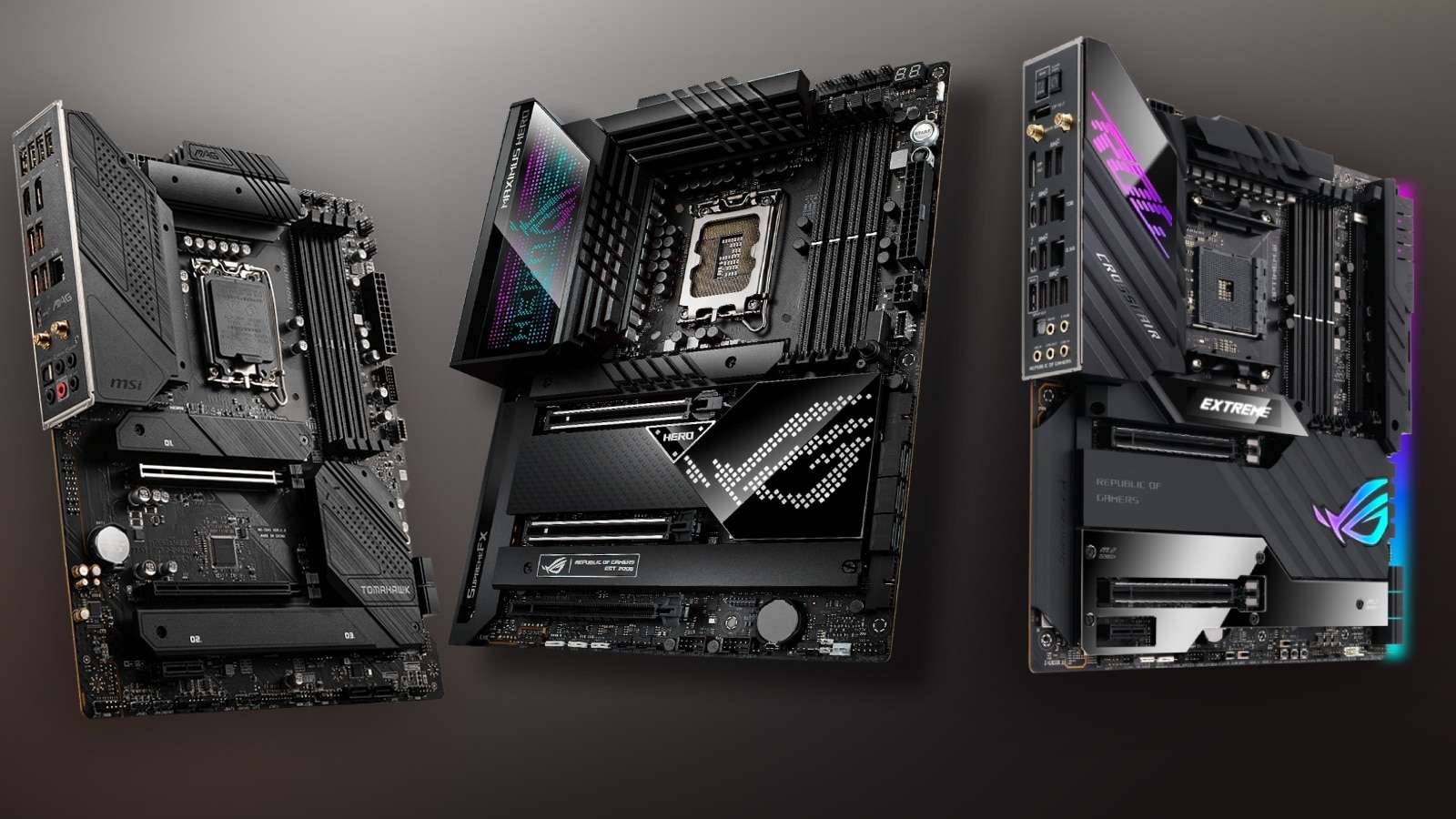 Dexerto
DexertoIf you are on the lookout for a new gaming motherboard there are a lot of choices out there. In order to find the best one for your needs, we’ve put together this handy guide.
The choice of motherboard in your gaming PC affects every other aspect of your gaming PC build. A motherboard is a force that guides all its little silicon children to the same goal, so getting the right one for your needs is possibly the most critical part of the building process.
Firstly, it’s important to decide if you are on Team Red (AMD) or Team Blue (Intel) as the CPU will need a compatible motherboard. AMD tends to keep their CPU socket types around for a while, so if you buy an AM5-compatible motherboard now, it will likely still serve you well when it’s time to upgrade, whereas Intel likes to change socket designs regularly.
If you are planning on splashing out on a top-end CPU and GPU, or indeed if you already made the purchase, then it’s important to find a motherboard that can keep up with the performance. A lower-specced motherboard could see your performance being throttled, or even lacking enough power headers to run some of your components.
That said, not many people will need to be on the absolute cutting edge of motherboard and chipset technology to get the level of performance they need. So check out our guide to find out what’s right for you.
The best gaming motherboard: ASUS ROG Maximus Z690 Hero
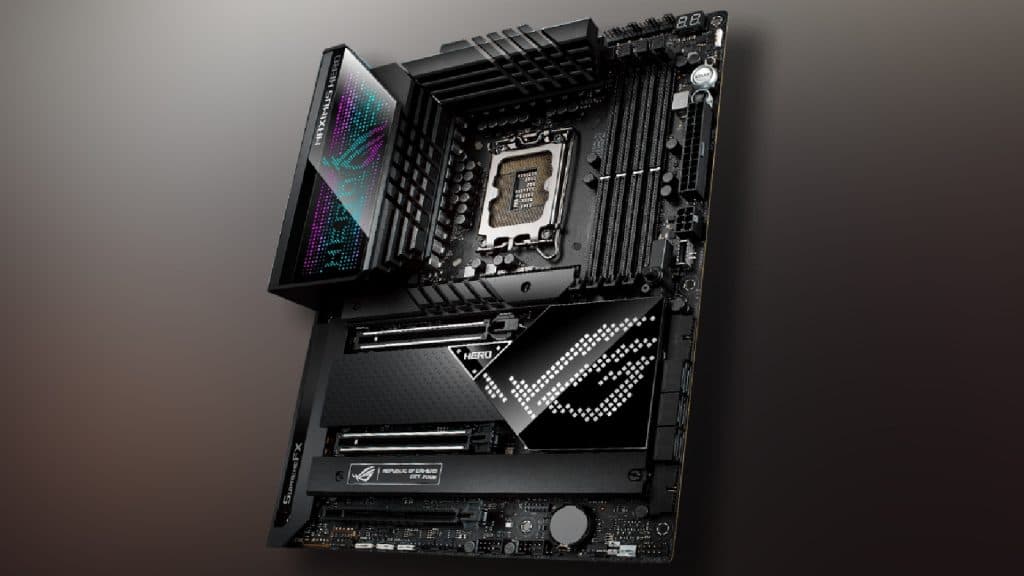 Dexerto
DexertoRight now, the best gaming motherboard is the ASUS ROG Maximus Z690 Hero. Boasting compatibility with Intel 12th gen chips like the i9-12900k, this board has large heatsinks for cooling your VRMs for overclocking performance and huge, LED shrouds over them, which do not offer any performance benefits, but they sure are pretty, right?
ASUS offers an AI overclocking mode, which you’d want to use this type of board for, in addition to a huge number of ports around the back for I/O. You also have support for three NVMe drives, so if you’re looking to put a huge amount of storage on your device, this might be the one for you. The board also comes packed in with the ROG Hyper m.2 cards, which gives you access to PCIe 5.0 speeds, and you can also expand the board’s total M.2 capacity to a dizzying five drives, which won’t fully impact or saturate all of your PCIe 5.0 lanes.
This ATX Motherboard has it all, from I/O to networking, storage, and all the dazzling RGB you might want for a modern gaming setup. There are higher-end boards out there, but they’re mostly focused on getting water blocks put in place of traditional air cooling. For most people, this is already overkill, which is why we’ve ranked it at the top of our list.
Key specs
- CPU socket: LGA 1700
- Chipset: Z690
- Memory support: 4x DDR5 DIMMs, up to 128GB at 6400 MT/s (Dual-channel)
- Expansion slots: 2x PCIe 5.0 x16, 1x PCIe 4.0 x16 (x4 speeds only)
- M.2 slots: 3x slots, 2x PCIe 4.0 x4 (1x supports SATA mode), 1x PCIe 3.0 x4
- Networking: 1x Intel 2.5 Gigabit Ethernet, WiFi 6E
You can buy the ASUS ROG Maximus Z690 Hero here: Amazon, Best Buy
The best AMD gaming motherboard: ASUS ROG Crosshair VIII Hero
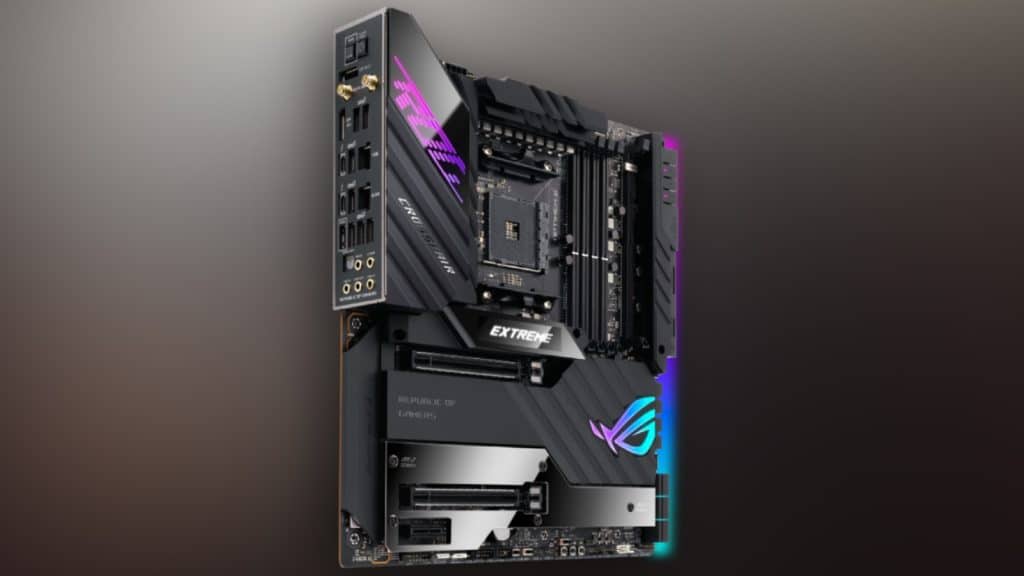 Dexerto
DexertoASUS continues to slay the high-end motherboard game. If you are on an older AM4 platform and are looking for an upgrade, then the ASUS ROG Crosshair VIII might be the one for you. It supports DDR4 RAM, has dual PCIe 4.0 m.2 slots, and beefy heatsinks for active cooling between power phases, which might make you consider overclocking your AM4 system.
The only gripe we have with this is that the entire AM4 platform is going to be outdated fast, so you might want to refrain from picking one up, or building an AMD AM4-based system until then. But, if you’re looking for the best performance from AM4, this board has it all, including some excellent audio compatibility, and a DDR4 Boost feature that promises that you’ll achieve higher clocks with increased stability.
Key specs
- CPU socket: AM4
- Chipset: X570
- Memory support: 4x DDR4 DIMMs, up to 128GB at 5300 MT/s (Dual-channel)
- Expansion slots: 2x PCIe 4.0 x16, 1x PCIe 3.0 x16, 1x PCI3 3.0 x1
- M.2 slots: 3x slots, 2x M.2 PCIe 4.0 x4, 1x PCie 4.0 x4 22110
- Networking: 1x Realtek 2.5 Gigabit Ethernet, 1x Realtek Gigabit LAN, WiFi 6E
You can buy the ASUS ROG Crosshair VIII here: Amazon, Best Buy
The best mid-range motherboard: MSI MAG B660 Tomahawk WiFi DDR4
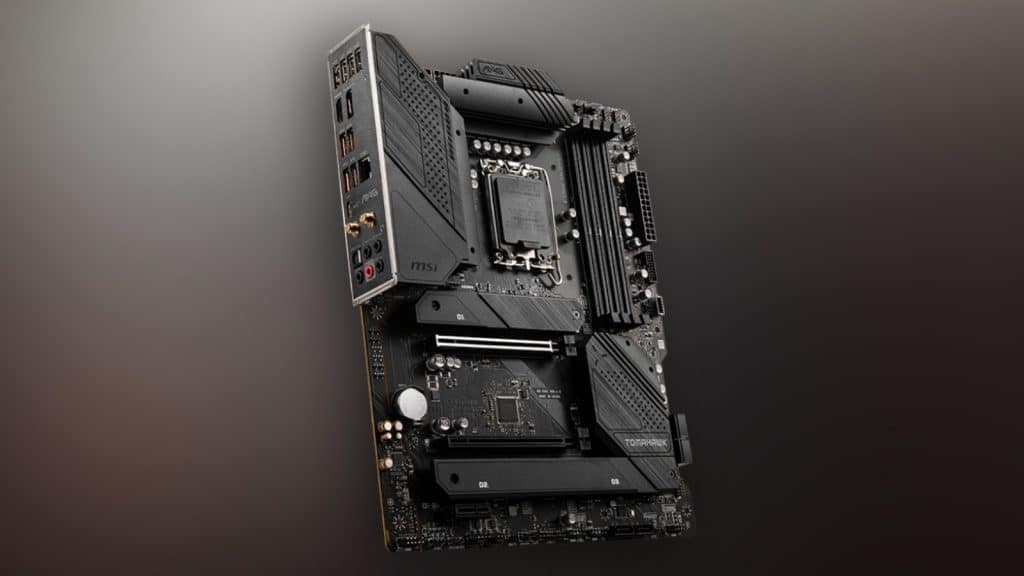 Dexerto
DexertoSince we’re sticking with 12th-generation Intel boards for our recommendations because AM4 is quickly being retired, the best mid-range gaming motherboard is the MSI MAG B660 Tomahawk WiFi DDR4. As the name suggests, you’re going to get DDR4 compatibility here, if DDR5 is still too expensive for your tastes.
This motherboard offers good heatsinks, and a decent amount of NVMe slots, and comes in a blacked-out, no-frills look that’s purely utilitarian in its design. Despite that, it’s still able to handle the hottest of chips, with nice quality-of-life features like onboard WiFi, a healthy dose of I/O, and 7.1 audio, making it more than enough for most mid-range builds that require a bit of expandability.
Key specs
- CPU socket: LGA 1700
- Chipset: B660
- Memory support: 4x DDR4 SIMMS, up to 128GB at 4800 MT/s (Dual-channel)
- Expansion slots: 1x PCIe 4.0 x16, 1x PCIe 3.0 x16, 1x PCIe 3.0 x1
- M.2 slots: 3x slots, 2x PCIe 4.0 M.2 x16, 1x PCIe 4.0 x8
- Networking: 1x Realtek 2.5 gigabit LAN, 802.11ax WiFi
You can buy the MSI MAG B660 Tomahawk WiFi here: Amazon, Best Buy
The best budget motherboard: Gigabyte B660 Gaming X DDR4
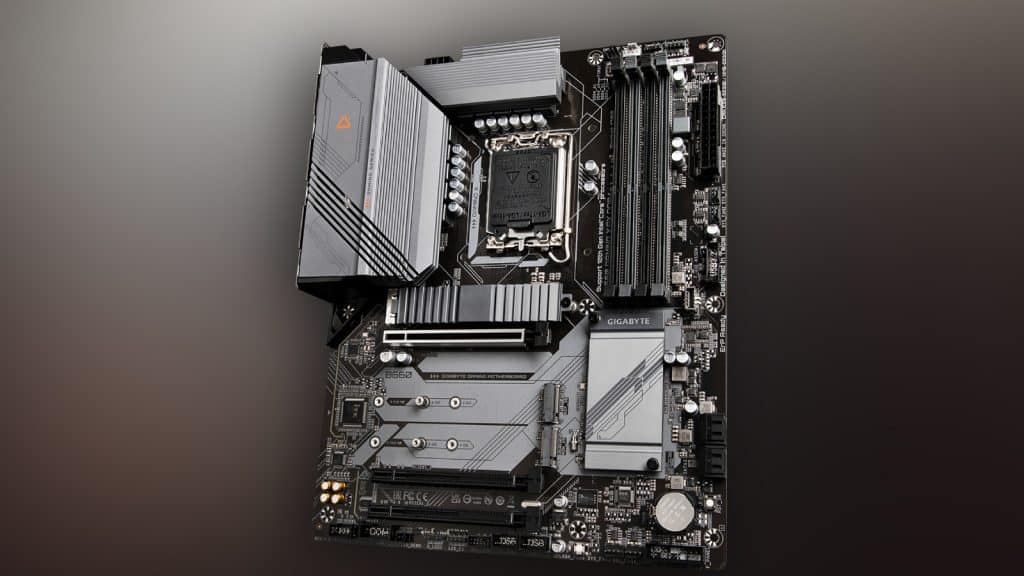 Dexerto
DexertoGigabyte’s motherboards are tried and tested, with the company offering a fantastic budget option for those on Intel’s 12th-generation platform, supporting the latest CPUs, while also supporting the more-affordable DDR4 RAM platform, so you can still get great gaming performance, without having to splash out for incredibly expensive DDR5 memory.
The B660 Gaming X also offers large VRMs for cooling, and a great suite of networking and I/O options for you, without completely breaking the bank like other motherboards in this list. It also has great PCIe 4.0 support, meaning that you’re not leaving much bandwidth on the table, and you’ll also be able to enjoy Gigabyte’s QFLASH feature if you ever need to upgrade your BIOS. You could certainly do much worse at this price, but Gigabyte has you covered with a healthy dose of just about everything to make for a great mid-range PC build.
Key specs
- CPU socket: LGA 1700
- Chipset: B660
- Memory support: 4x DDR4 DIMMs, up to 128GB at 4400 MT/s (Dual-channel)
- Expansion slots: 1x PCIe 5.0 x16, 1x PCIe 4.0 x16,1x PCIe 3.0 x16
- M.2 slots: 3x slots, 2x PCIe 4.0 x 4, 1x PCIe 3.0
- Networking: 1x Realtek 2.5 Gigabit LAN
You can buy the Gigabyte B660 Gaming X DDR4 here: Amazon
Which size motherboard?
Motherboards come in a couple of different shapes and sizes, too, but for most PC builds, you’ll find that an ATX board will offer the most functionality, especially for gaming. If everything we just said makes absolutely no sense to you, and you want something a little bit simpler, you might want to pick up a gaming laptop, instead.
DDR4 or DDR5?
Since we’re in a transitional period between DDR4 and DDR5 RAM, you’re going to want to make sure that whatever RAM that you have picked up is actually compatible with your system, as each generation uses a slightly different physical keying on the DIMM, meaning that it won’t fit, and won’t be compatible with your motherboard.
PCIe standards and the BIOS
Additionally, you’ll need to keep an eye on the PCIe standard that your motherboard uses, 5.0 is the latest generation, and that’s what you’ll find on many high-end motherboards. This will be good to keep an eye on for future-proofing your system somewhat, but it will come at a cost.
You’ll also want to take into consideration other things like BIOS Flashback features, the number of fan headers, in addition to the number of USB headers that you may want on your board. There’s a lot to think about, and looking for the perfect fit for your gaming system can be an incredibly tough proposition.
If you click on a product link on this page we may earn a small affiliate commission.